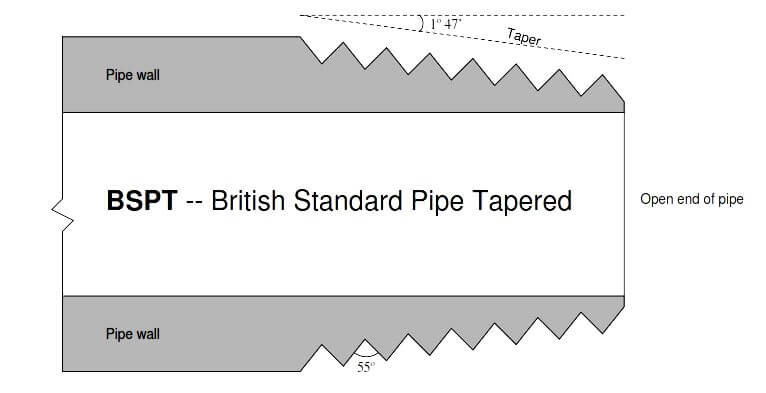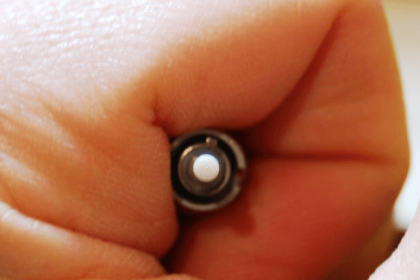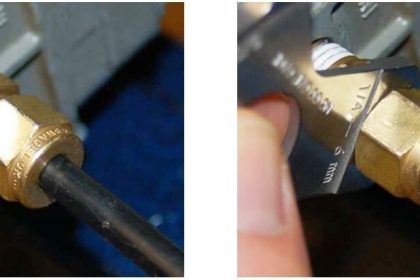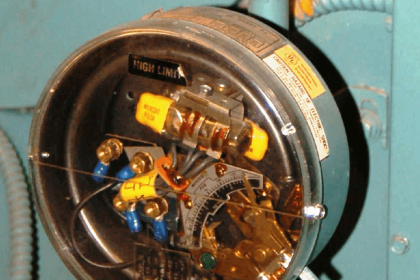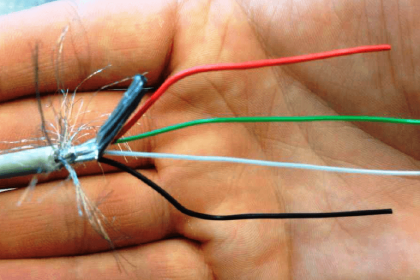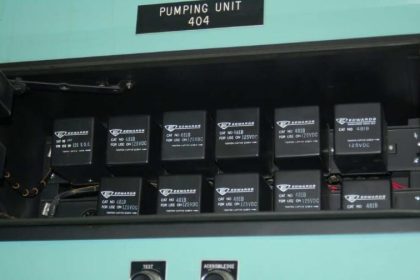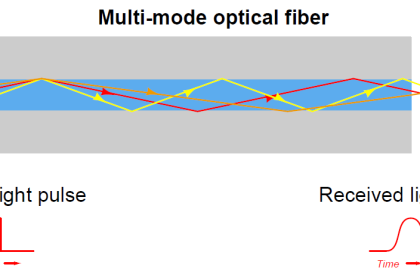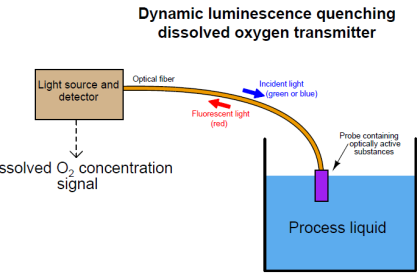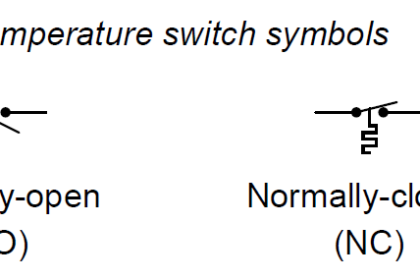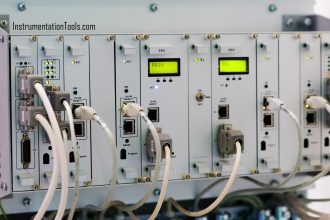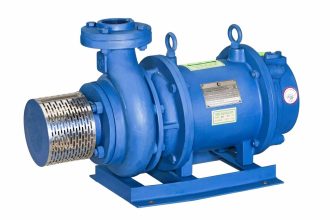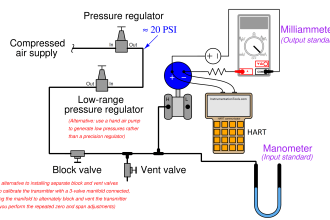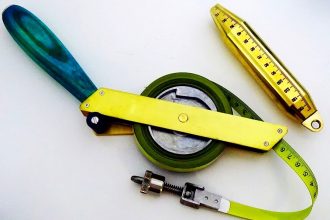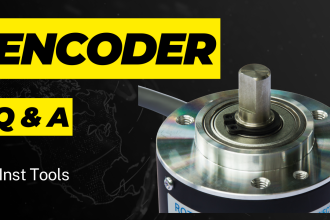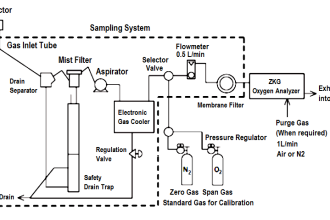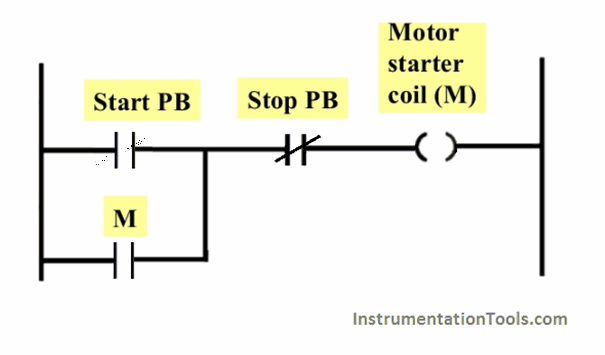For smaller pipe sizes, threaded fittings are more commonly used to create connections between pipes and between pipes and equipment (including some instruments). A very common design of threaded pipe fitting is the tapered pipe thread design. The intent of a tapered thread is to allow the pipe and fitting to “wedge” together when engaged, creating a joint that is both mechanically rugged and leak-free. When male and female tapered pie threads are first engaged, they form a loose junction:
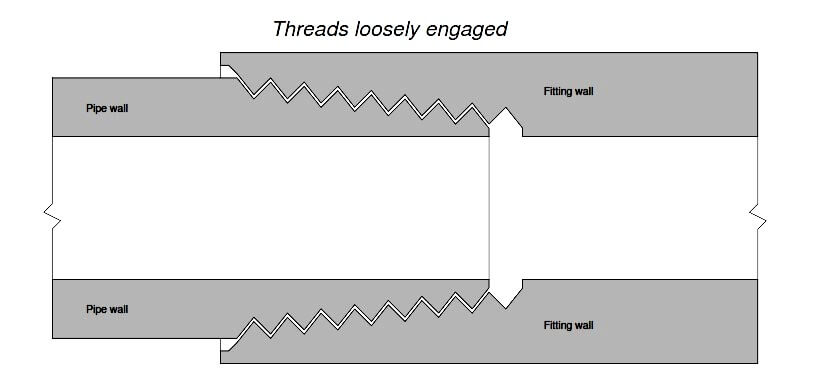
After tightening, however, the tapered profile of the threads acts to wedge both male and female pieces tightly together as such:
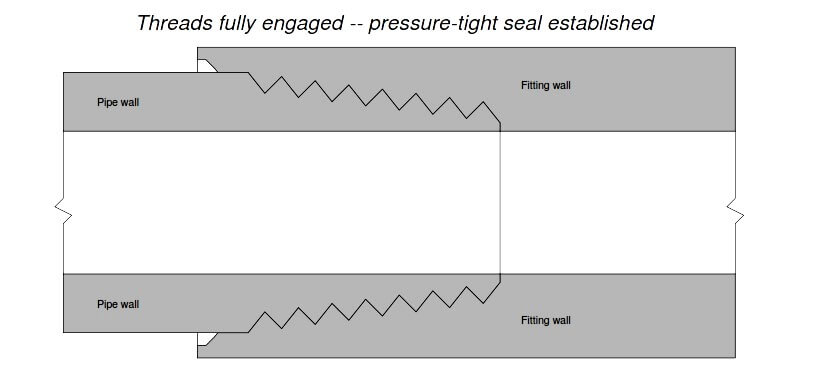
Several different standards exist for tapered-thread pipe fittings. For each standard, the angle of the thread is fixed, as is the angle of taper. Thread pitch (the number of threads per unit length) varies with the diameter of the pipe fitting
In the United States, the most common tapered thread standard for general-purpose piping is the NPT, or National Pipe Taper design. NPT threads have an angle of 60 o and a taper of 1 o 47′ or 1.7833 o
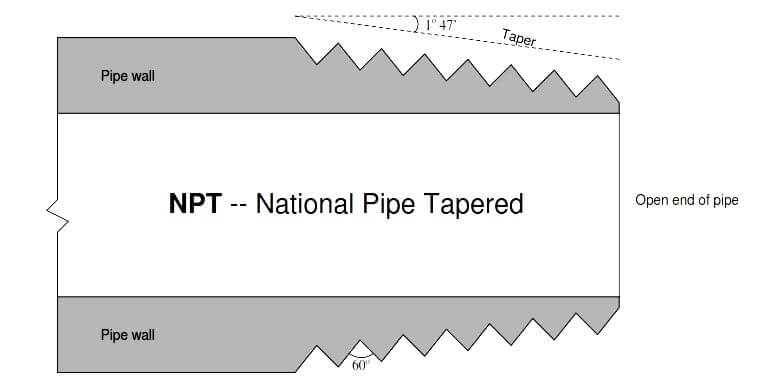
NPT pipe threads must have some form of sealant applied prior to assembly to ensure pressure tight sealing between the threads. Teflon tape and various liquid pipe “dope” compounds work well for this purpose. Sealants are necessary with NPT threads for two reasons: to lubricate the male and female pieces (to guard against galling the metal surfaces), and also to fill the spiral gap formed between the root of the female thread and the crest of the male thread (and vice-versa).
NPTF (National Pipe Thread) pipe threads are engineered with the same thread angle and pitch as NPT threads, but carefully machined to avoid the spiral leak path inherent to NPT threads. This design – at least in theory – avoids the need to use sealant with NPTF threads to achieve a pressure-tight seal between male and female pieces, which is why NPTF threads are commonly referred to as dry seal. However, in practice it is still recommended that some form of sealant be used (or at the very least some form of thread lubricant ) in order to achieve reliable sealing.
ANPT (Aeronautical National Pipe Tapered) is identical to NPT, except with a greater level of precision and quality for its intended use in aerospace and military applications.
Another tapered-thread standard is the BSPT, or British Standard Pipe Tapered. BSPT threads have a narrower thread angle than NPT threads (55 o instead of 60 o ) but the same taper of 1 o 47’ (1.7833 o )
